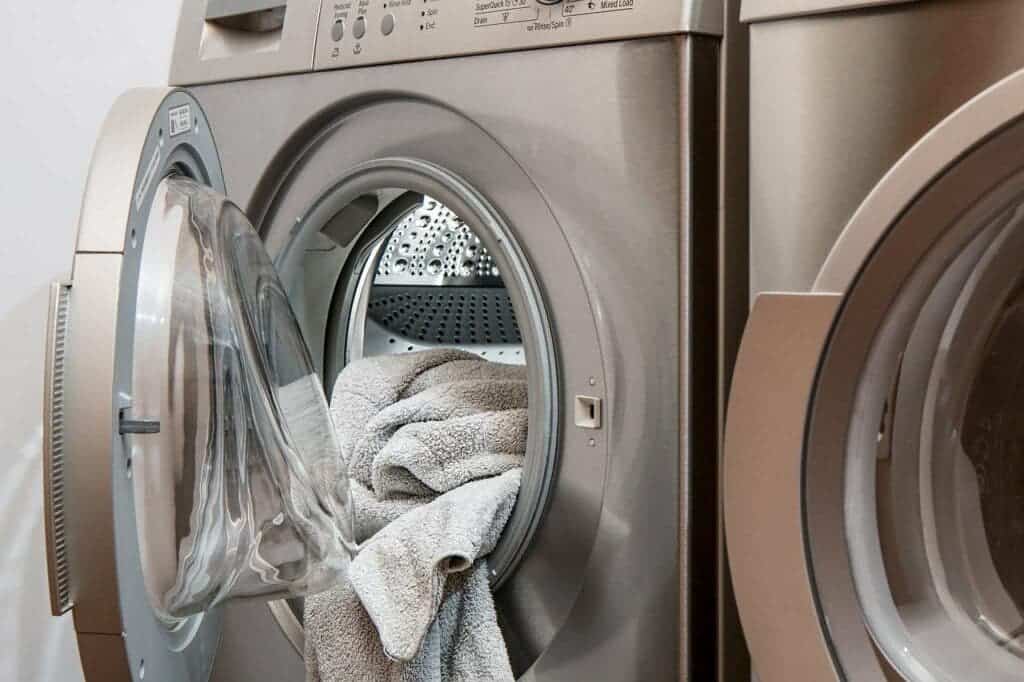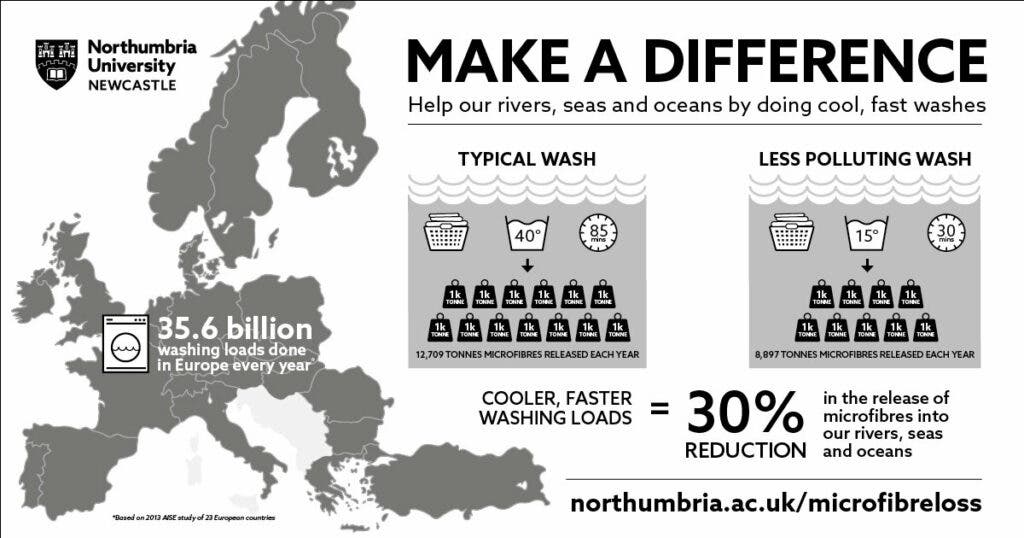
It turns out that you can help change the world by just changing your laundry settings. A new study out of Northumbria University in partnership with Proctor & Gamble — makers of products such as Ariel, Tide, Downy and Lenor — found that 13,000 tons of microfibers are being released into European marine environments every year and that this figure could be reduced by up to 30 percent if the Earth’s residents just changed their laundry habits.
The findings, published by the scientific journal PLOS ONE, suggest that every time you wash your clothes, thousands of tiny microfibers from the fabric are released into rivers and oceans, causing marine pollution. Each wash load released an average of 114 mg of microfibers per kilogram of fabric during a standard washing cycle.
A 2013 report by the International Association for Soaps, Detergents and Maintenance Products suggested 35.6 billion wash loads are completed in 23 European countries each year, and the researchers suggest a massive 12,709 tons of microfibers are being released from washing machines into rivers, the sea and the ocean each year in Europe alone.
Global fiber production, both synthetic and natural, has more than doubled in the past 20 years, reaching 107 million metric tons in 2018 and expected to reach 145 million metric tons in 2030. If current trends continue (and there is no reason to believe they won’t), this would create some serious microfibers in our seas.
“This is the first major study to examine real household wash loads and the reality of fiber release,” says John R. Dean, Professor of Analytical and Environmental Sciences at Northumbria, who led the study. “We were surprised not only by the sheer quantity of fibers coming from these domestic wash loads, but also to see that the composition of microfibers coming out of the washing machine does not match the composition of clothing going into the machine, due to the way fabrics are constructed.”
The researchers found that 96 percent of the fibers released were natural, coming from cotton, wool, and viscose, with synthetic fibers, such as nylon, polyester, and acrylic accounting for just four percent. However, a recent study by Newcastle University suggests that this four percent makes up almost a fifth of microplastics in our oceans.
The best way, according to the Northumbria researchers, to reduce the number of polluting microfibers is to make small changes such as using cold water and shorter washing cycles. A 30-percent reduction was recorded when they performed a 30-minute 15-degree Celsius (59 Farenheit) wash cycle, in comparison to a standard 85-minute 40-degree (104 F) cycle, based on typical domestic laundering. These changes alone would save 3,813 tons of microfibers being released into European marine ecosystems.

The group found even more dramatic differences when comparing different microfibers released from different types of North American washing machines. Households in that part of the globe have historically used high volume traditional top loading washing machines with an average 64 liter (16.9 gallons) wash water volume. The market is gradually moving to high-efficiency machines which use up to 50 percent less water and energy per load.
As a consequence, these high-efficiency machines released less microfibers than traditional top-loading machines, with notable examples including a 70 percent drop in microfibers from polyester fleece fabrics and a 37 percent decline from polyester T-shirts.
Other key findings emerging from the study include:
- Larger wash loads led to a decrease in the release of microfibers due to a lower ratio of water to fabric. As such, the research team advises consumers fill – but do not overfill – their washing machines. A correctly filled washing machine should be around three-quarters full.
- New clothes release more microfibers than older clothes. Microfiber release was more prominent in new clothes during the first eight washes.
- Fabric softeners were found to have no direct impact on microfiber release when tested in both European and North American washing conditions.
“This study has proven that consumer choices in the way they do their laundry can have a significant and immediate impact on microfiber pollution,” said Dr. Neil Lant, Research Fellow at Procter & Gamble. “These won’t eliminate the issue but could achieve a meaningful short-term reduction while other solutions such as washing machine filters and low-shedding clothing are developed and commercialized.”
Was this helpful?



